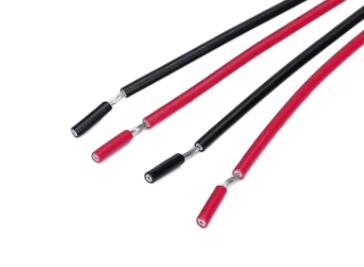What is the difference between solid and stranded wire
2023-11-01
Solid wire and stranded wire are two common types of electrical conductors used in various applications, and they differ in their construction and characteristics:
1. Solid Wire:
- Structure: Solid wire consists of a single, continuous piece of metal (usually copper or aluminum) with a uniform cross-section throughout its length. It is essentially a single, solid conductor.
- Rigidity: Solid wire is rigid and not very flexible. It maintains its shape and does not bend easily. This makes it suitable for applications where the wire will not be subject to frequent bending or movement.
- Use Cases: Solid wire is commonly used in electrical wiring for homes and buildings, as it is cost-effective and easy to terminate using wire connectors and terminal blocks. It is also used in printed circuit boards (PCBs) and for internal wiring in appliances and devices.
- Advantages: Solid wire has lower electrical resistance compared to stranded wire of the same diameter, which can be beneficial in certain applications. It is also less susceptible to mechanical damage in some scenarios.
2. Stranded Wire:
- Structure: Stranded wire is composed of multiple smaller wire strands twisted or braided together. The number of strands and their diameter can vary, and they are typically made of copper or aluminum.
- Flexibility: Stranded wire is much more flexible than solid wire. Its flexibility allows it to bend and move more easily, making it suitable for applications that require frequent flexing or movement.
- Use Cases: Stranded wire is commonly used in applications where flexibility is important, such as power cords, extension cords, patch cables, and in automotive wiring. It is also used in some electronic devices and equipment.
- Advantages: Stranded wire is more resistant to fatigue and mechanical stress caused by bending and movement, which makes it ideal for applications with constant motion. It is also less likely to break when subjected to repeated bending.
In summary, the primary difference between solid wire and stranded wire is their construction and flexibility. Solid wire consists of a single, continuous conductor and is rigid, while stranded wire is composed of multiple strands twisted together and is flexible. The choice between the two depends on the specific requirements of the application. Solid wire is often chosen for stationary or fixed installations, while stranded wire is preferred for applications that involve movement or flexibility.



